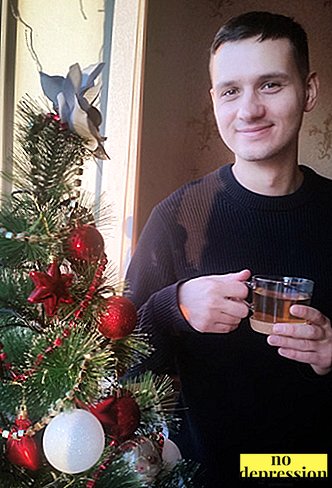They worked with candles and aroma sticks, mantras included, asanas and mudras studied. However, everything turned out to no avail, it is impossible to relax. Stress remains, to the negative emotions is added more irritation due to the fact that the effect is zero. Effort, time, money spent, and there are still no positive changes. How to learn to meditate so that you enjoy every session? Secrets of the right approach to classes - in 7 tips of this article.
How to learn to meditate
Work with breathing
A person's breathing directly depends on his physical and emotional state. It accelerates, becomes superficial with any experience, stress. Euphoric joy and panic fear are almost opposite emotions. What they have in common is how they affect the frequency, the rate of inhalation and exhalation.
This relationship is mutual: controlling the respiratory process, you can bring yourself to life and calm the inner storm.
In most meditative practices, there is a marked emphasis on breathing properly. How to develop this skill:
- do swimming, dancing or athletics;
- learn to sing, correctly arranging pauses for breaths;
- follow the breath, try to manage it in the moments of the heat of emotions or during the execution of physically difficult exercises;
- practice deep abdominal breathing;
- prolong breaths in and out, pause between them.
Proper breathing better nourishes the body with oxygen, gives energy and even relieves pain. It helps to distract from irritants, noticeably calms. That is why it is so important during meditations.
Train your body
Why are specific asanas used during meditative sessions? Why not lie down or sit in any comfortable posture?
Most body positions designed for meditation require you to level your back and neck and lower your chin slightly. The advantage of this position is due to two reasons relating to different areas.
- The science. Position helps a person not to fall asleep. Light discomfort does not allow drowsiness to grow, even if the eyes are closed. If a person lies down, a conditioned reflex will work for him, because the horizontal position is associated with sleep. At the same time, the position is stable, does not require excessive control, the risk of injuries is reduced.
- Esoterics. The pose is ideal for harmoniously merging body, mind and mind. It allows all chakras to open. The parietal point ("funnel") at the same time rushes to space and freely interacts with it.
No wonder the borrowed word “asana” is so similar to our lexeme “posture”. Those who dubbed it at least once, or at least tried to support it, know how difficult and lengthy the process is. To take the same lotus position, you have to train your body. What ways you can do it:
- train, paying particular attention to the muscles of the waist and back in general;
- stretching regularly;
- before any active leisure or sports to warm up, warming up the muscles;
- master yoga, qigong, similar practices;
- gradually increase the load on the body, change exercises.
Coping with thoughts
Any urgent Things that are potentially distracting can be better resolved before the sessions.. Otherwise, they will interfere with relaxation, and training will only increase irritation.
As for the remaining thoughts, they do not necessarily drive or try to suppress. On the contrary - it is desirable to listen to them. While a person is busy with something, he does not have the time and opportunity to deeply know himself. During meditation hidden thoughts open up. They have nothing to drown out, do not distract from them, so they are at first confusing or even frightened by their quantity. How to respond to them:
- understand their essence;
- accept them as part of yourself, your own consciousness or your subconscious;
- do not look for reasons or negative in them;
- allow them to change one after another freely, directing them in a positive direction;
- slowly abstracting from them, spending less and less time (with their full acceptance, it will not be as difficult as it seems).
First, it is the negative that comes to mind. If you correctly meet and conduct this stage, new thoughts will appear. However, they will already be calmer, more interesting, important and positive. They will immediately be relieved, it will be much easier to abstract.
Start small
Active or busy individuals hard for a long time to be in one position without doing. No patience, quick effect, experience in the classroom. What are asanas worth? Some require extremely long preparation.
This does not mean that you need to throw everything, if "not given from birth." To practice the same yoga, one does not have to be “chosen.” And it is certainly not necessary to work for wear, torturing your own body and brain. Instead, better:
- to establish the capabilities of the body, to determine its norm loads;
- make a training schedule with their gradual complication;
- take into account health problems, medical restrictions;
- come up with a reasonable punishment for excuses and groundless refusal of employment;
- ask for help from instructors or friends, if it is difficult to keep motivation.
Control the mood
The mood before meditation plays a huge role. Not to be confused with the mood. A person may be angry, happy or calm, but his session will still be successful. Just because he wants it so and believes the positive impact.?
A hit-parade of thoughts that knock down the mood for success and deliberately condemn to failure, regardless of the efforts:
- “Well, here's a couple of minutes I lie down, and then I will definitely begin” (laziness);
- “Today is an unfavorable day, it is better to start tomorrow, then it will definitely work out” (excuses);
- “How can this even help? Well, I will do everything - and then what? ” (skepticism);
- “It will not work, I will do something wrong, as usual” (uncertainty, pessimism);
- “Two candles are missing, my asana is still not perfect” (unhealthy perfectionism).
Naturally, nothing good will come of such a mood. Therefore, it is better to immediately identify your obstacle, get to its true causes, and then eliminate this obstacle.
Examine your desires and needs
The training itself will allow you to study yourself better. However, there are things that you can try to learn before classes. For example, choose between meditations:
- at home or outdoors;
- with mantras, music or in silence:
- with or without incense;
- alone or in a group of like-minded people;
- morning, afternoon, evening or spontaneous;
- daily or more rare.
Answers to some questions will be clear immediately. Others are determined by trial and error, experiments. This is the way of self-knowledge. It starts with trivial details. Awareness of their life goals, dreams, destinations will not come until such seemingly insignificant details are revealed to the individual.
Expand theoretical knowledge
It is difficult and too long to learn something that there is not even the slightest idea. Before practice it would be good to gain knowledge.
Approved theoretical sources can be considered the following two books:
- “Awareness”. Written by a scientist, professor of psychological sciences. Mark Williams and a scientific journalist, part-time doctor of biochemistry Danny Penman. Includes a course of meditation distributed for 8 weeks. The publication is designed to teach to meditate, to show the variability of such classes, to answer questions that arise in the process. It is aimed at improving physical and mental health, the development of endurance, creative abilities.
- "Silence". The author is a Vietnamese monk, abbot of the Buddhist meditation center. Tit Nat Han. The book describes exercises for breathing, as well as techniques of conscious meditation. Information in the collection teaches abstracted from the hustle and bustle, renew and extend calm.
If you wish, you can use other sources, because each book has its own secrets.
If a person tries to understand how to learn to meditate correctly, he is really interested in success. So, with motivation, everything is in order. This is a big plus, but desire alone is not enough - effort is required. And not any, but organized, aimed in the right direction. The 7 listed recommendations will set the direction for effective meditations and teach you how to get the maximum benefit from each session.



